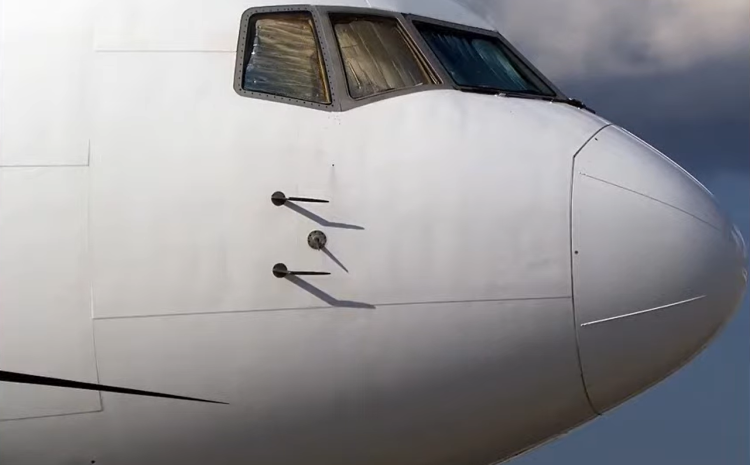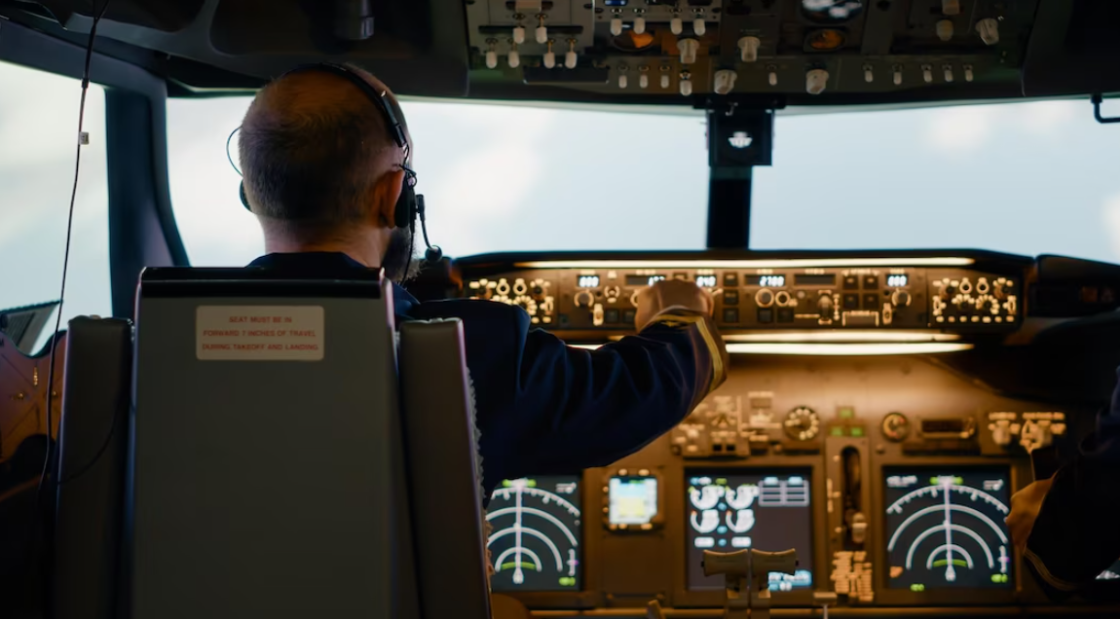A Closer Look at Pitot Tube Functionality

In the realm of modern aircraft, the pitot tube reigns as an indispensable instrument, playing a pivotal role in ensuring safe flights. By harnessing data from this crucial device, flight computers accurately determine airspeed, a vital parameter for navigation.
The mechanics behind a pitot tube’s operation are fascinating. Mounted outside the aircraft and aligned with the airflow, this small metal tube measures air pressure. As the aircraft moves through the skies, air rushes into the tube, generating pressure that varies with the aircraft’s speed. The onboard flight computers use this pressure data to precisely calculate the airspeed, a critical factor in maintaining control and safety during flight.
The significance of a properly functioning pitot tube cannot be underestimated. Any errors or malfunctions in this system are considered potentially safety-critical and have, regrettably, contributed to several accidents and crashes over the years.
In this article, we delve into the inner workings of the pitot tube, shedding light on its crucial role in aviation. By understanding its operation, we gain insights into how this ingenious instrument contributes to the safety and efficiency of air travel.
What Is a Pitot Tube?
- A pitot tube serves as a vital instrument for measuring the velocity of a flowing fluid;
- It becomes an indispensable sensor, particularly for air, providing crucial data necessary for safe flights by measuring air pressure.
Flight data, including airspeed, altitude, and rate of climb, heavily relies on the pitot tubes and their associated systems. From essential flight instruments to the autopilot, these systems depend on the accuracy of pitot tube measurements.
The pitot tube traces its origins back to the ingenuity of French engineer Henri Pitot, who invented it in 1732 while tasked with measuring water flow in the Seine river, Paris. Over time, French scientist Henry Darcy further refined it into its modern form during the mid-19th century.
Given the critical role they play in aviation, any errors in the pitot tube system are regarded as potential safety risks. As a result, manufacturers often install multiple pitot tubes for redundancy, ensuring data reliability.
The sensor itself consists of a small metal tube pointing forward with its opening facing the relative wind direction. Mounting locations on the front of the aircraft, near the cockpit, or on the wings enable more accurate measurements as the airflow is less distorted by the aircraft structure.
A typical pitot tube comprises a 10-inch (25 cm) long metal tube with a 1/2 inch (1 cm) diameter hole and boasts no moving parts. This simplicity contributes to its reliability and effectiveness in providing essential flight data.
The Mechanics of Pitot Tubes
When an aircraft ventures through the skies, it encounters the oncoming air at a specific velocity. This airflow’s speed generates the all-important lift beneath the wings, sustaining the aircraft’s flight.
Ascertaining this velocity becomes paramount for flight safety and performance. The ingenious working principle of the pitot tube commences with an open metal tube precisely facing the oncoming air. As the aircraft moves forward, the air forcefully enters the tube. Trapped within this small enclosed space, the air comes to a standstill, creating stagnation pressure, also known as pitot pressure. Remarkably, the faster the aircraft flies, the greater the stagnation pressure.
However, relying solely on stagnation pressure is insufficient to determine the actual airflow velocity. Further measurements and calculations are necessary to unlock the precise velocity information. This is where pitot tubes, in conjunction with additional systems, play a crucial role in accurately gauging the aircraft’s vital airflow velocity.
Additional Sensors for Assistance
Air, being a gas, possesses the property of compressibility. As an aircraft ascends, the air surrounding it becomes less dense, owing to its ascent and reduced atmospheric pressure. Consequently, air pressure is not uniform across all altitudes.
To gauge the air pressure at its current altitude, the aircraft employs an external sensor known as static pressure. The static port remains unaffected by the aircraft’s motion through the air. Engineers strategically position static ports where the airflow is relatively undisturbed. Flush-mounted on the aircraft’s fuselage, the static port precisely measures the static pressure.
The onboard computers rely on Bernoulli’s equation, utilizing the difference between stagnation pressure and static pressure to calculate airspeed accurately.
In some aircraft, a more integrated solution known as the pitot-static tube combines both pitot and static port functionalities within a single device, eliminating the need for two separate sensors. This tube comprises two openings: one in the front for measuring stagnation pressure and another along its side to gauge static pressure.
In modern aircraft equipped with digital cockpits, such as the Airbus A350, flight data computers utilize both static and stagnation pressure measurements to calculate essential parameters like airspeed, altitude, and vertical speed. Additionally, on supersonic aircraft, this data aids in operating the machmeter, which indicates the ratio of true airspeed to the speed of sound—a critical metric for supersonic flight. The seamless integration of these sensors and precise calculations ensure safe and efficient flight operations.
Ensuring Safe Flight: The Critical Role of Pitot Tubes

Data from the pitot tube or pitot-static tube stands as a cornerstone for a safe and successful flight. Numerous fundamental instruments depend on the accurate data supplied by these sensors.
Precise airspeed indications are paramount due to their direct impact on flight dynamics. If an aircraft flies too slowly, its wings won’t generate sufficient lift, resulting in a stall. Conversely, excessive speed can strain the aircraft’s structure, surpassing its design limits. Pilots also rely on airspeed to estimate flight duration and the subsequent fuel requirements for the journey. Recognizing the vital importance of pitot tubes, aircraft manufacturers typically install multiple backup sensors, especially in modern jet airliners. This redundancy ensures that in case one becomes inoperative, flight data computers can seamlessly switch to another functional sensor.
The consequences of an error or failure in the pitot measurement system can be severe for flight safety. These devices are susceptible to blockages caused by ice, water, or insects that may nest within them. Such blockages result in inaccurate airspeed readings due to incorrect air pressure measurements.
To mitigate potential issues, aviation authorities strongly recommend thorough pitot measurement device checks before each flight. Manufacturers equip these instruments with heating elements to prevent ice buildup, while aviation authorities mandate heatable measurement devices for aircraft certified for instrumental flight. Additionally, maintenance workers cover the measurement devices during extended ground periods to prevent insect nesting.
Tragically, past airline disasters have been attributed to pitot measurement device errors. The 2009 crash of Air France Flight 447 involved ice crystal buildup, partially clogging the instruments and contributing to the tragic outcome. The vigilance of pilots, airlines, and maintenance personnel in ensuring the proper functioning of these devices remains a vital aspect of flight safety, safeguarding passengers and crew alike.
A Significant Sensor
Pitot tubes play a pivotal role in aircraft as they provide crucial data used by computers to measure airspeed accurately.
- Operating on a simple principle, the pitot tube measures air pressure within a small metal tube oriented into the airflow outside the aircraft;
- As the aircraft moves forward, the oncoming air rushes into the tube, becoming trapped inside;
- With increasing speed, the pressure within the tube rises, and vice versa;
- Flight data computers utilize this pressure to precisely calculate the aircraft’s airspeed.
In conjunction with other sensors, the computers can further employ data from the pitot tube to determine altitude and vertical speed, facilitating a comprehensive understanding of the aircraft’s flight parameters.
The data furnished by the pitot tube is fundamental for safe flying. Its critical significance to flight safety leads modern airliners to incorporate multiple pitot tubes, ensuring redundancy in case of any malfunctions. As such, errors in the pitot tube system are considered potentially safety-critical, exemplified tragically by the crash of Air France Flight 447 in 2009.
Conclusion
The pitot tube is a small yet critical component that plays a pivotal role in aviation. By measuring air pressure differences, it enables the accurate determination of an aircraft’s airspeed, a fundamental parameter for safe and efficient flight. Despite its simplicity, the pitot tube’s functionality is sophisticated and indispensable, making it a cornerstone of modern aviation technology. Its continuous refinement and incorporation into advanced flight systems ensure that pilots and passengers alike can rely on precise airspeed data for smooth and secure journeys through the skies.